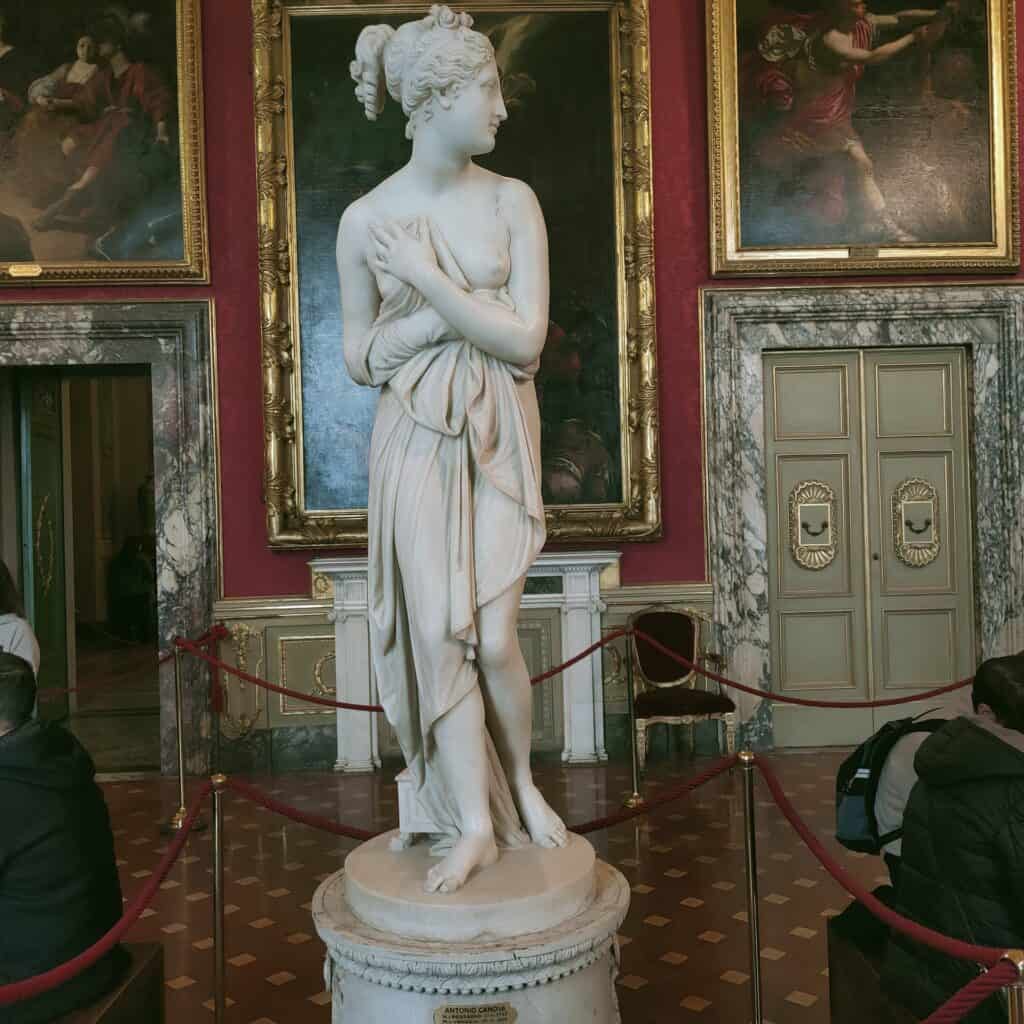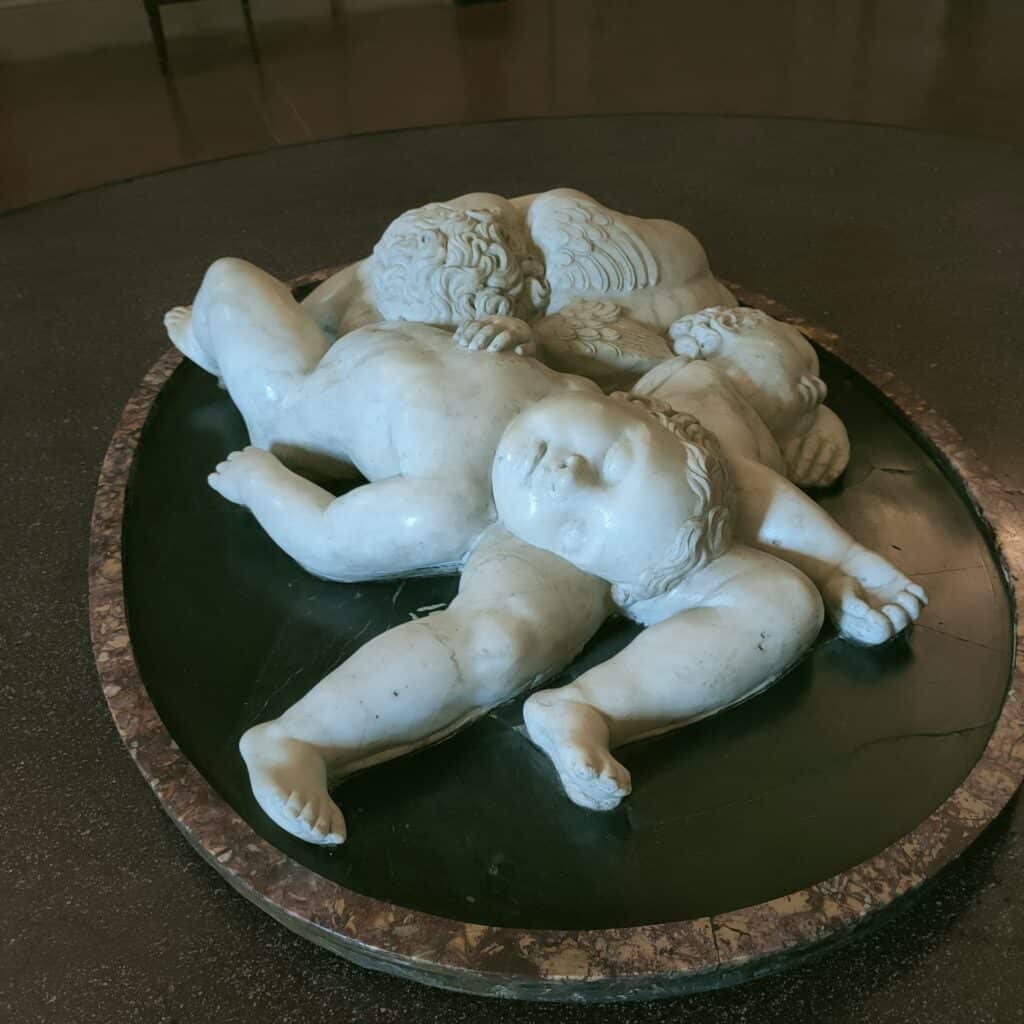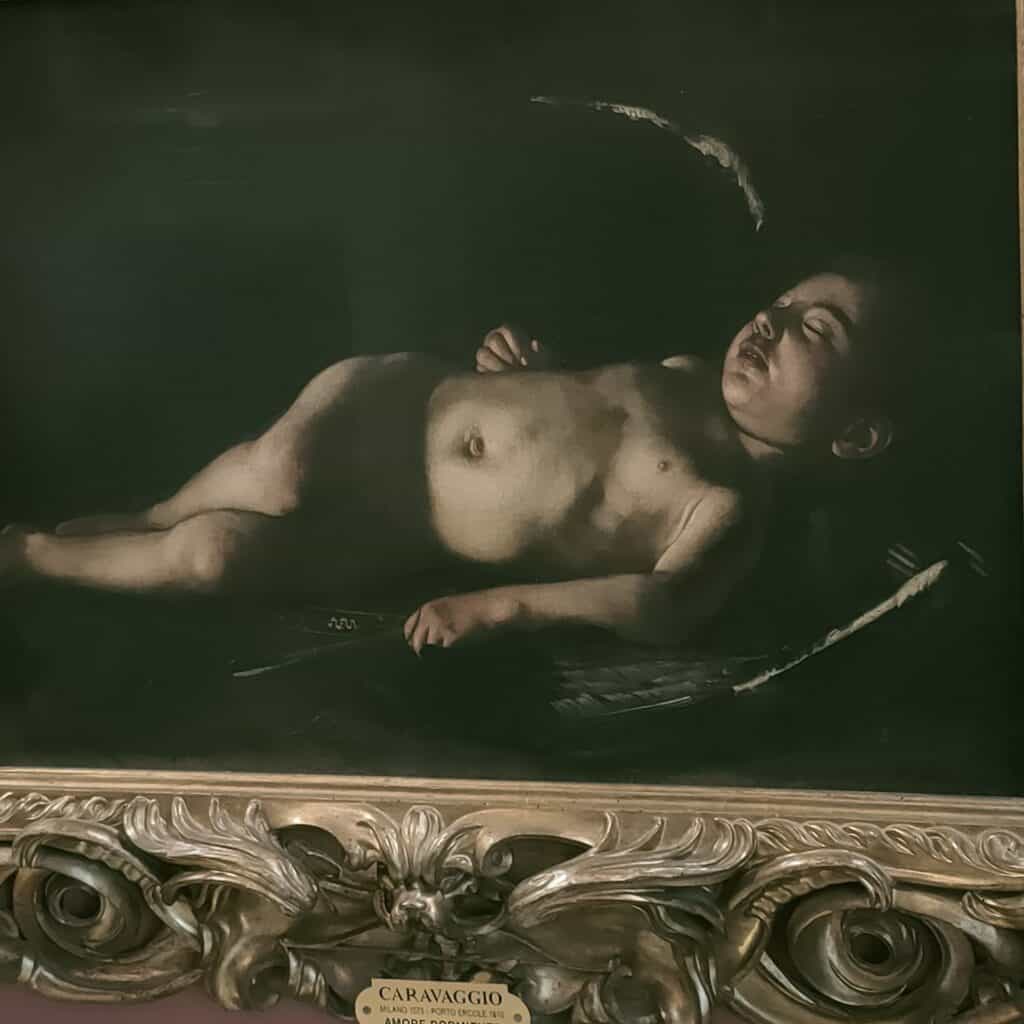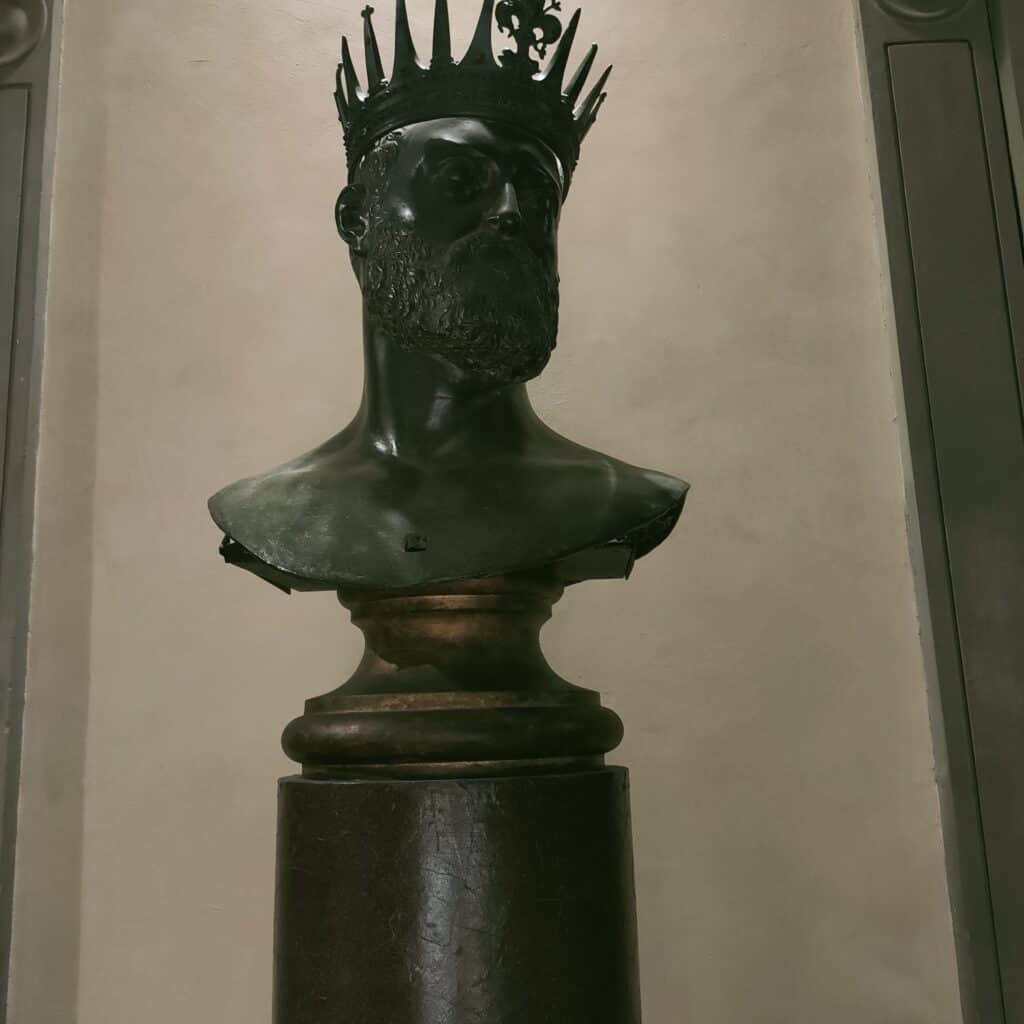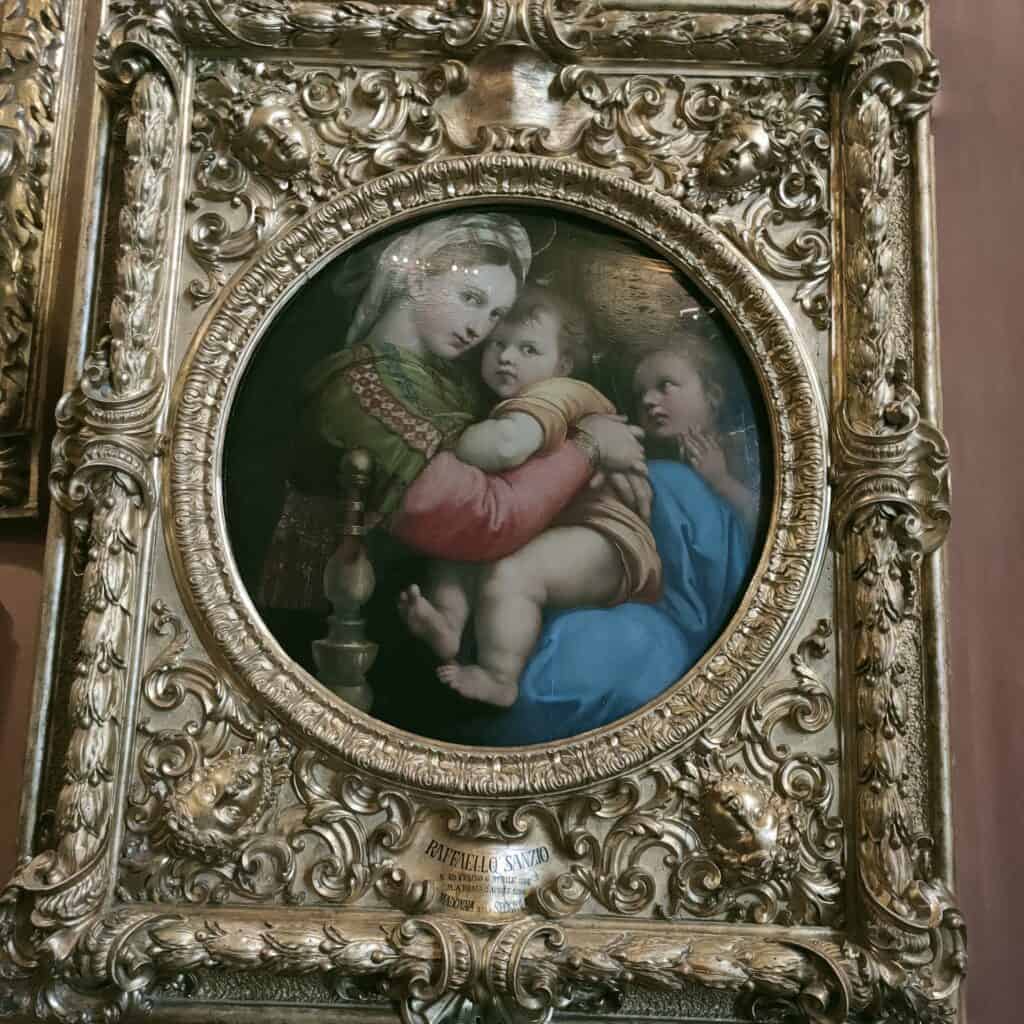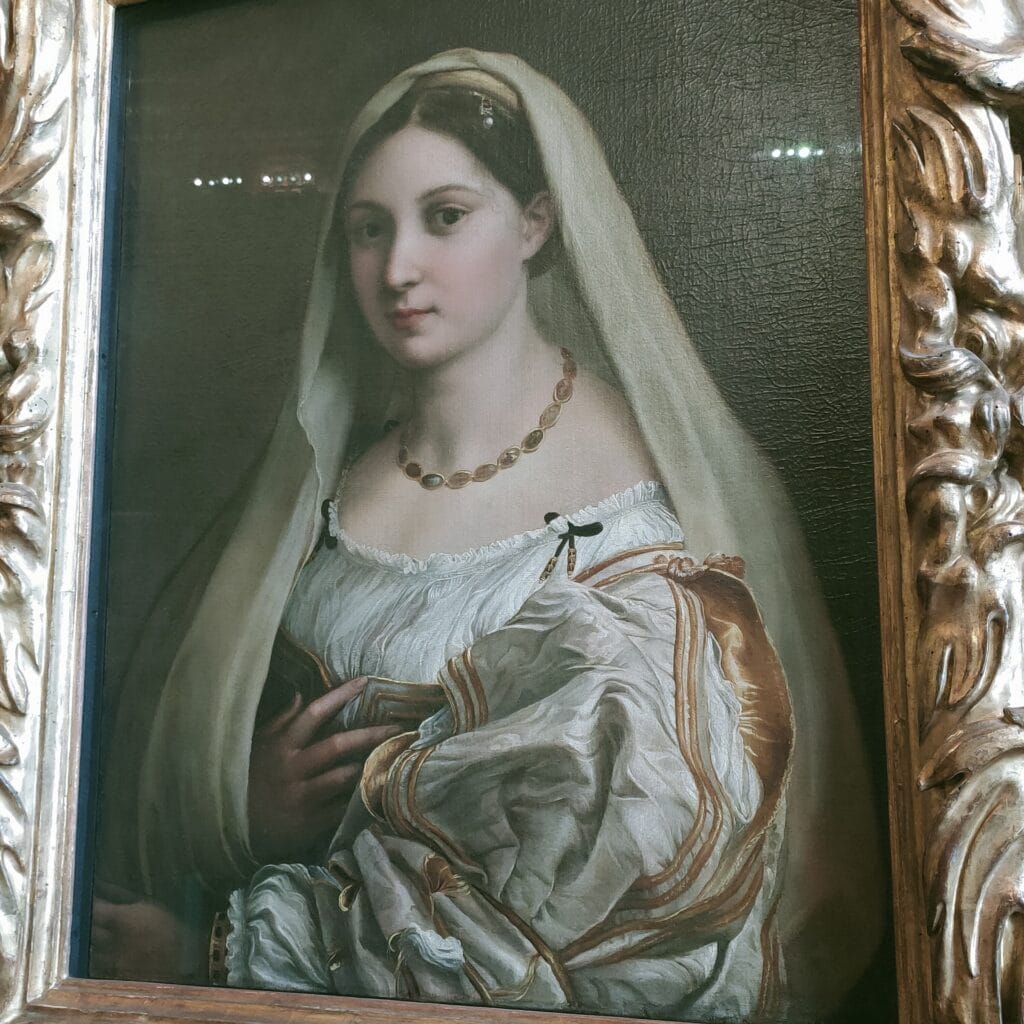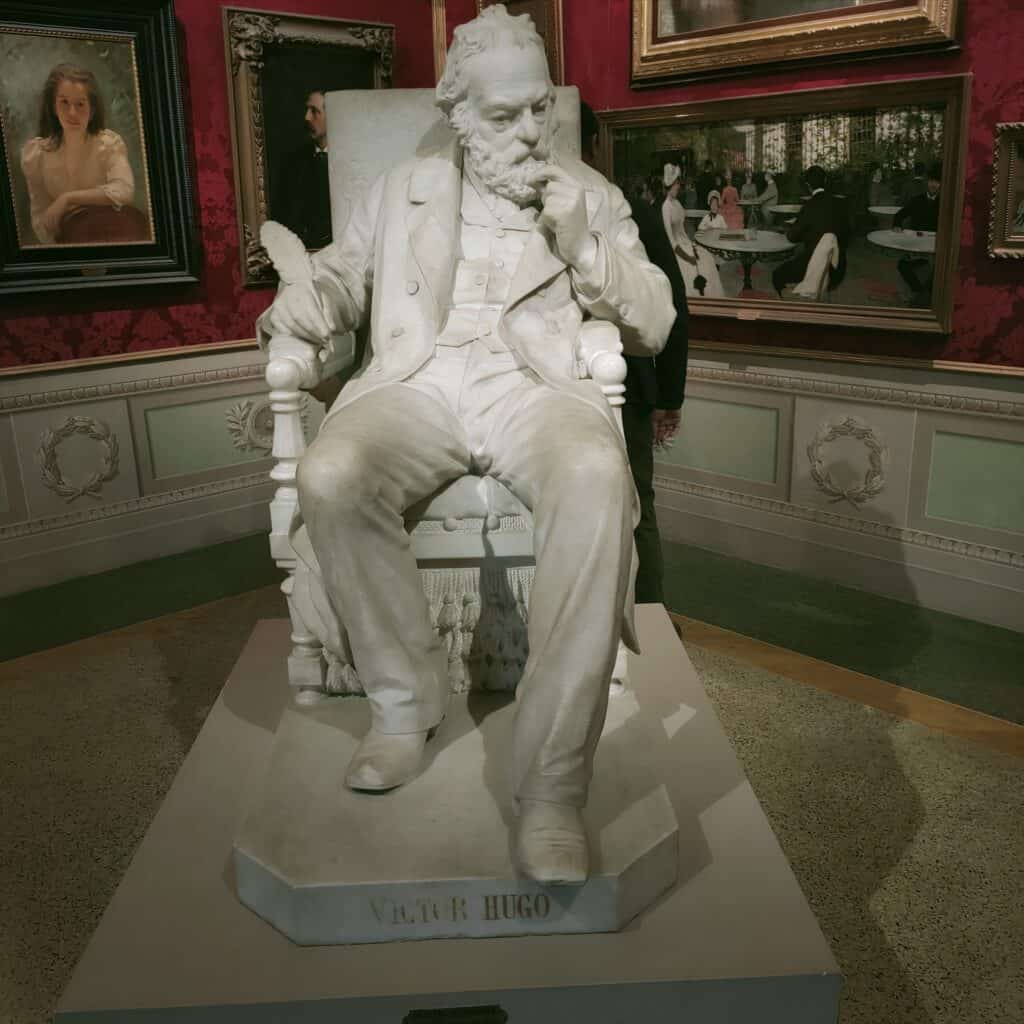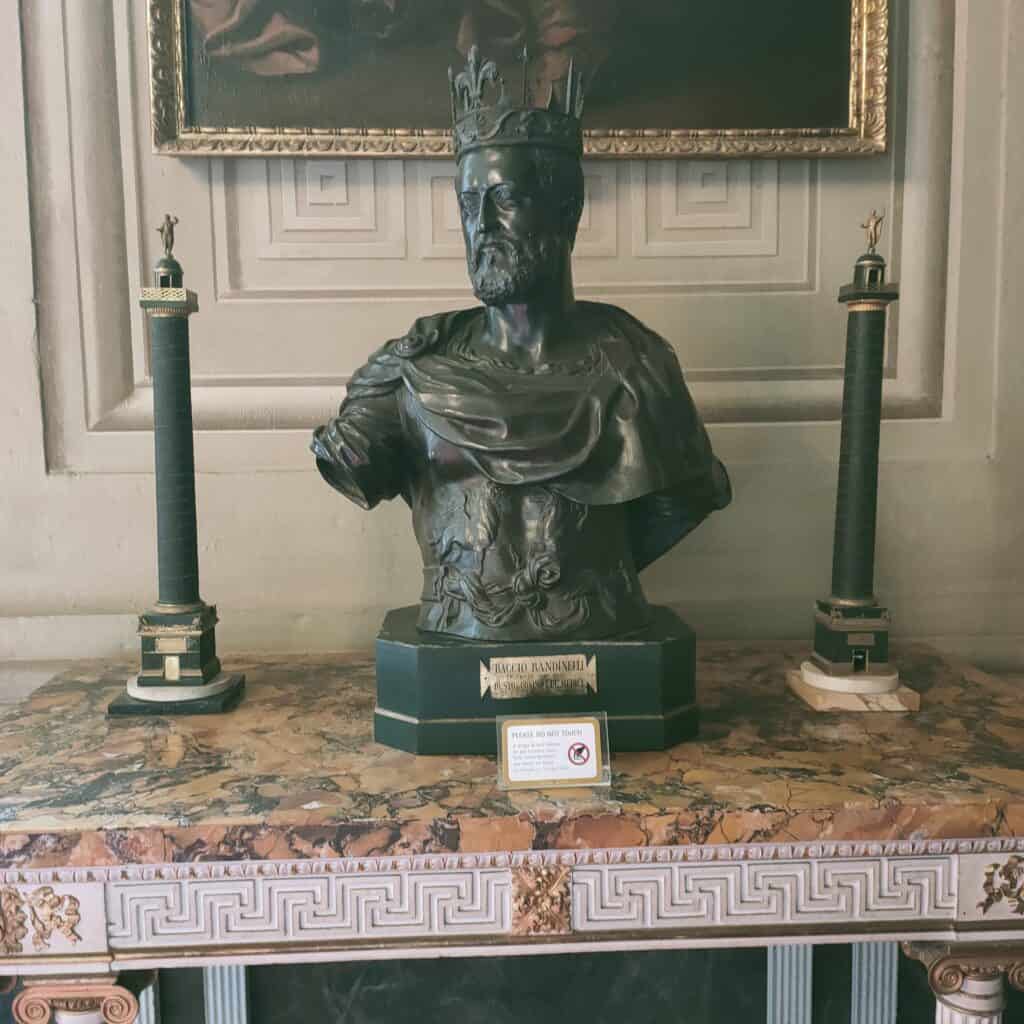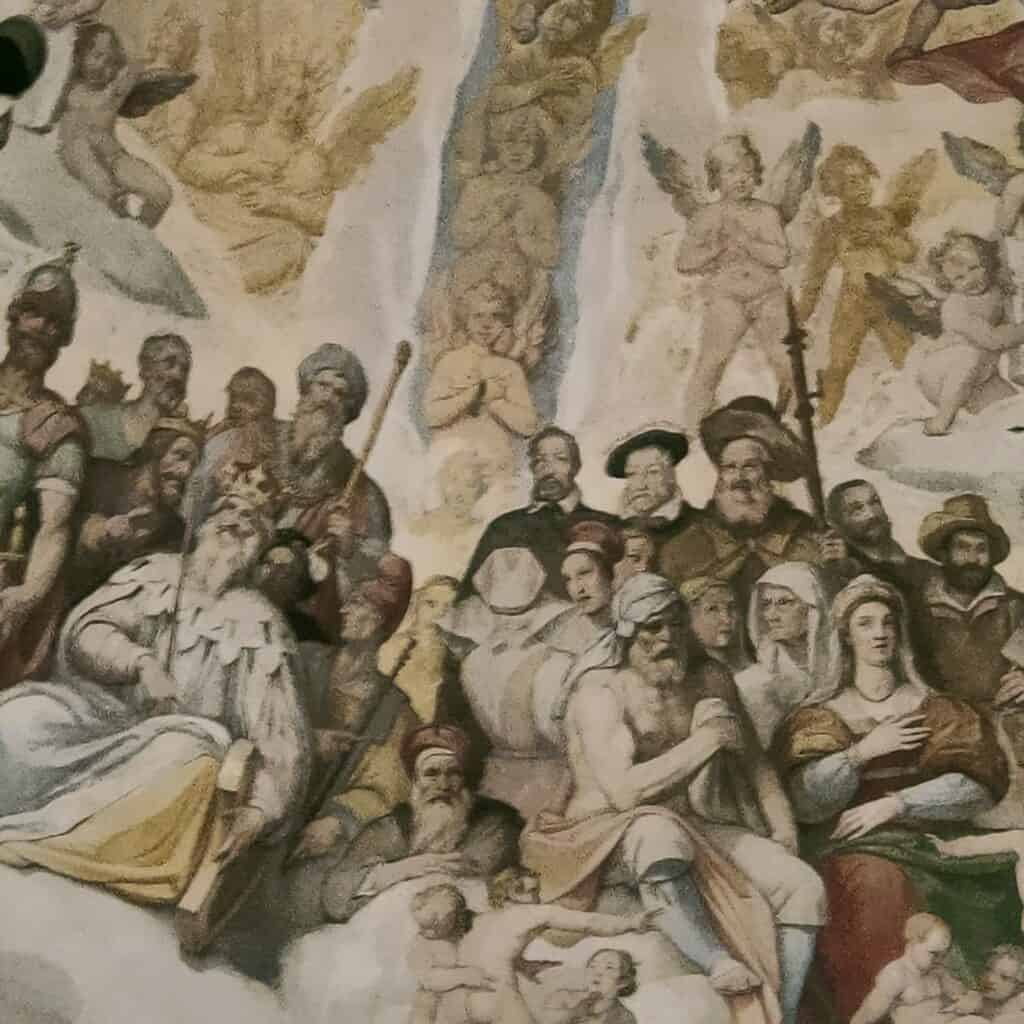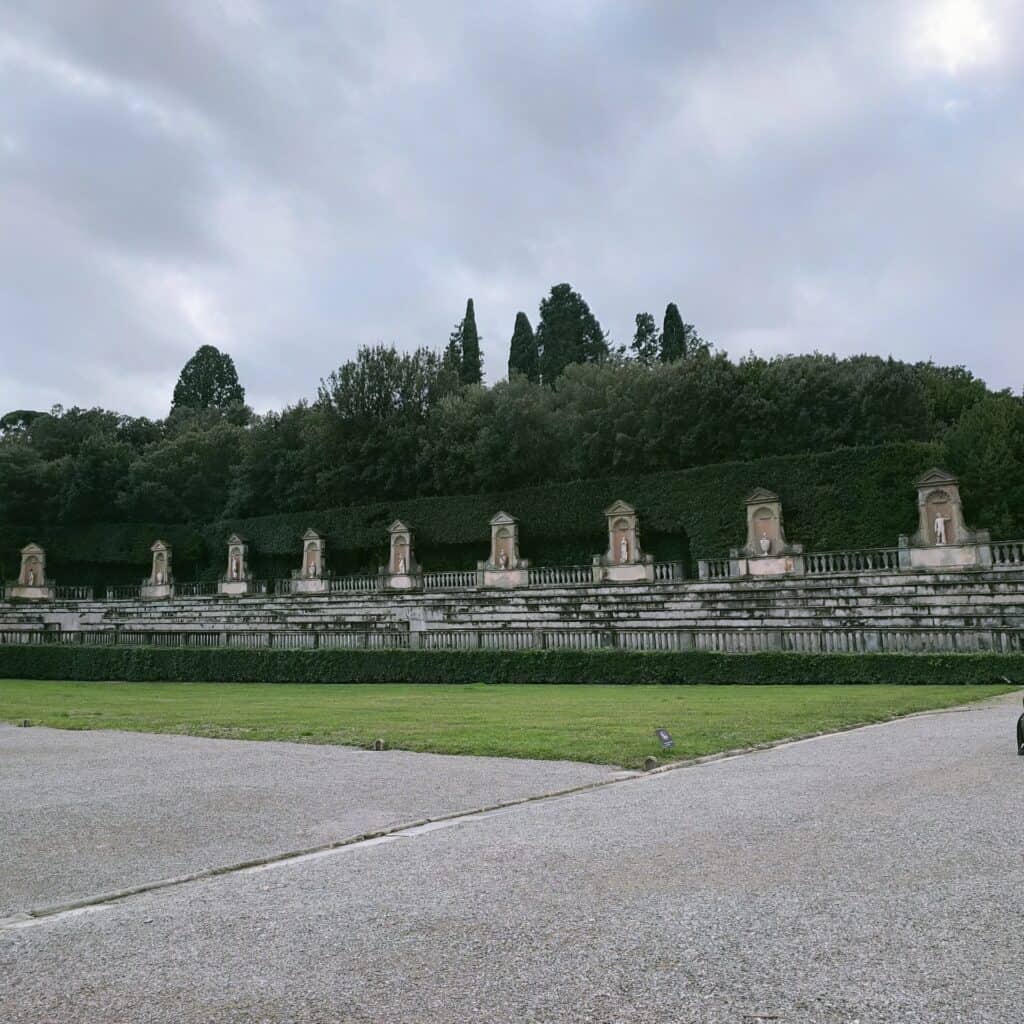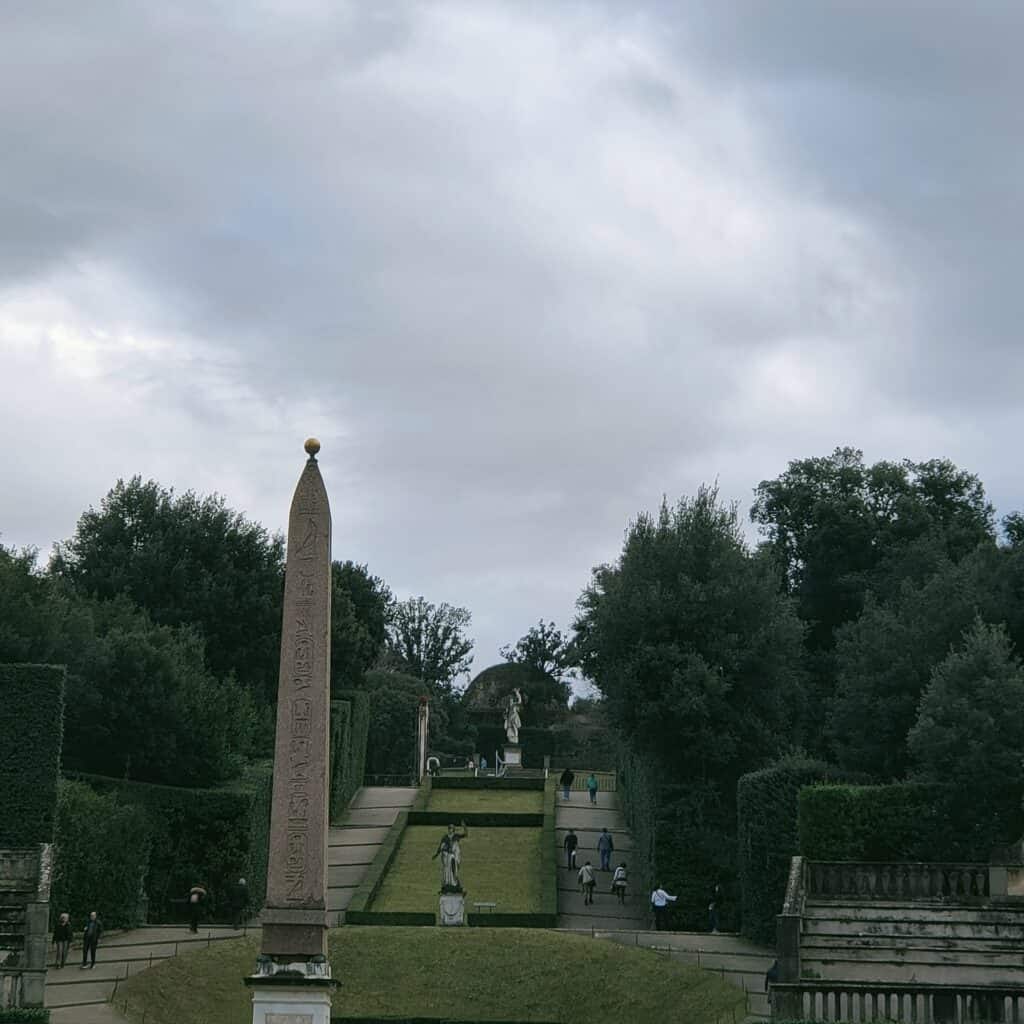Purchased by the Medici in 1550, the Palace was inhabited by Cosimo I of the Medici and his wife Eleonora of Toledo as the new grand-ducal residence and symbol of the Medici’s power in Florence and Tuscany.
It was the seat of two other dynasties, that of the Habsburg-Lorraine and the other of the House of Savoy. Today the Palace includes five museums: the Treasury of the Grand Dukes and the Museum of Russian Icons, the Palatine Gallery, with its Medici collections of paintings on display and sumptuous frames, furnishings, stuccoes, silks and Baroque frescoes, the Imperial and Royal Apartments with tables inlaid in semi-precious stones, mirrors, furnishings and silk tapestries on the walls, the Gallery of Modern Art with collections of paintings and sculptures from the late eighteenth century to the first decades of the twentieth century, and the Museum of Costume and Fashion, the first state museum in Italy dedicated to the history of fashion and its social significance with collections of clothes, jewelry and accessories from the eighteenth century to the present day.
A guided tour of Palazzo Pitti will allow you to grasp both the historical and artistic significance of its environments, retracing the various eras and seeing their styles and their evolution over the centuries.
It is a personalized and exclusive guided tour that will also allow you to avoid long and exhausting waits to access its interior.
What to see with the guided tour of Palazzo Pitti
Palazzo Pitti is a majestic Renaissance palace located in the area beyond the Arno River, in that part of the city called Oltrarno.
First belonging to the Pitti family, eternal rivals of the Medici family, the Palace was sold to Cosimo I of the Medici and his wife Eleonora of Toledo, tired of living in Palazzo della Signoria – better known as Palazzo Vecchio.
Inside there is a large quadrangular courtyard by Bartolomeo Ammannati, which has been used for historical events, such as, for example, the naval battle between Turkish and Christian ships (for which the courtyard was flooded to reach almost two meters deep) and the celebrations for the wedding between Ferdinand I de’ Medici and Christina of Lorraine in 1589.
All around the courtyard are the 5 museums that make up Palazzo Pitti while, crossing the square, you enter a beautiful open space called the Boboli Gardens.
With my guide at the Pitti Palace you will be able to choose your tour.
- Pitti Palace Tour with Palatine Gallery only: we will start our visit starting from the square in front of the façade of the Palace, Piazza Pitti, to learn about its history and its vicissitudes. We’ll stop in front of the Palace to admire the sculptural works that adorn it, such as the crowned lion head, a symbol of the Regency and the Medici power. We will finally enter the strictly geometric interior courtyard in which the Cave of Moses is located, made of limestone material and adorned with cherubs swimming in its tank. Finally, we will enter the Palace to reach the Palatine Gallery, the Museum with the largest concentration of artistic works in Florence. Located on the main floor of Palazzo Pitti, it houses 28 rooms with collections from the late Renaissance to the Baroque for a total of about 500 paintings. The most attractive rooms are the so-called Rooms of the Planets where, among others, we can admire works by Raphael, Michelangelo, Titian and Leonardo da Vinci.
- Pitti Palace Tour with Boboli Gardens: after crossing the courtyard, we will head towards the wonderful Boboli Gardens which are the first example of an Italian garden that will become the model for many European courts. Adorned with caves, the most important of which is the famous cave built by Bernardo Buontalenti between 1583 and 11593 commissioned by Francesco I dei Medici, and large fountains, such as the Fountain of Neptune and the Fountain of the Ocean, the Boboli Gardens extend their boundaries until they reach the ancient walls of Renaissance Florence. The Gardens were built between the 16th and 19th centuries, first by the Medici and later by the Lorraine and Savoy families. Inside there is the eighteenth-century Kaffeehaus, one of the rare examples of rococo style in Tuscany, from which it is possible to enjoy an enchanting view of the city of Florence.
Guide to Pitti Palace and Palatine Gallery
We will start our visit starting from the square in front of the façade of the Palace, Piazza Pitti, to learn about its history and its vicissitudes. We’ll stop in front of the Palace to admire the sculptural works that adorn it, such as the crowned lion head, a symbol of the Regency and the Medici power. We will finally enter the strictly geometric interior courtyard in which the Cave of Moses is located, made of limestone material and adorned with cherubs swimming in its tank. Finally, we will enter the Palace to reach the Palatine Gallery, the Museum with the largest concentration of artistic works in Florence. Located on the main floor of Palazzo Pitti, it houses 28 rooms with collections from the late Renaissance to the Baroque for a total of about 500 paintings. The most attractive rooms are the so-called Rooms of the Planets where, among others, we can admire works by Raphael, Michelangelo, Titian and Leonardo da Vinci.
Pitti Palace and Boboli Gardens
After visiting the Pitti Palace and the inner courtyard, we’ll head to the wonderful Boboli Gardens for a guided tour: the first example of an Italian garden that will become the model for many European courts.
Adorned with caves, the most important of which is the famous cave built by Bernardo Buontalenti between 1583 and 11593 commissioned by Francesco I dei Medici, and large fountains, such as the Fountain of Neptune and the Fountain of the Ocean, the Boboli Gardens extend their boundaries until they reach the ancient walls of Renaissance Florence. The Gardens were built between the 16th and 19th centuries, first by the Medici and later by the Lorraine and Savoy families. Inside there is the eighteenth-century Kaffeehaus, one of the rare examples of rococo style in Tuscany, from which it is possible to enjoy an enchanting view of the city of Florence.
If you want to visit the Gardens only, explore my dedicated tour!

